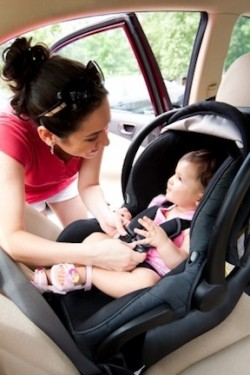
The first change, according to a recent Yahoo! article, involves installing car seats.
The installation of car seats is directly related to the safety they provide. If your child’s car seat is installed incorrectly, it could be failing to provide the maximum protection in an accident. Unfortunately, up to 75 percent of kids ride in a car seat that isn’t installed properly.
Since 2002, the government has required automakers to have anchors in the rear seats of all cars for the LATCH system. Using the LATCH system—which involves connecting the anchors to tethers on the bottom of car seats—is believed by safety advocates to offer a better fit.
Now, however, the National Highway Traffic Safety Administration recommends that the LATCH system only be used when the combined weight of the child and the car seat is 65 pounds or less. Above 65 pounds, the car seat should be fitted into the car using the seat belt.
“NHTSA is clarifying this weight standard because new data suggest lower anchors alone may not effectively restrain a car seat above the 65-pound threshold,” reported Yahoo!
This change comes because car seats have been getting heavier and parents have been keeping kids in car seats longer.
The second change is the institution of a new side-impact crash test for child’s car seats.
These new crash tests are designed to add another minimum safety standard to car seats. That standard is still three or four years out, however, as the NHTSA must gather data and conduct the tests. After that, manufacturers will have up to three years to comply with the new standard.
The NHTSA expects that the new tests won’t result in any drastic changes to current car seats—just additional padding or side wings, perhaps.
Parents should know that, unless a car seat has been recalled, their car seats are perfectly fine. You don’t need to buy a new car seat today: just make sure that it is installed correctly (you can find instructions here) for your child’s weight.